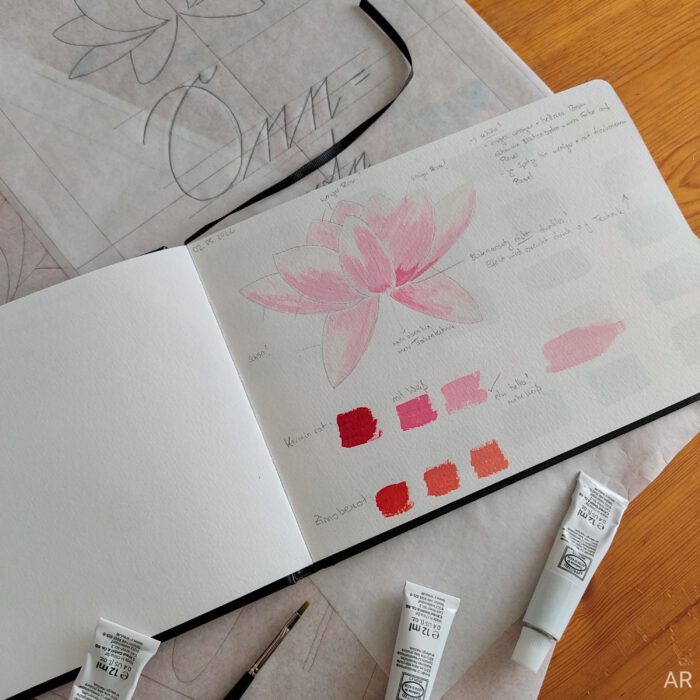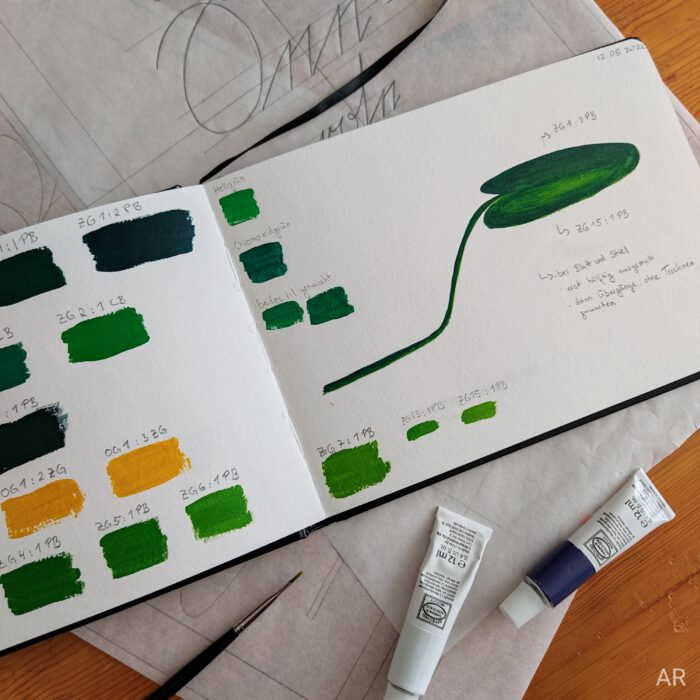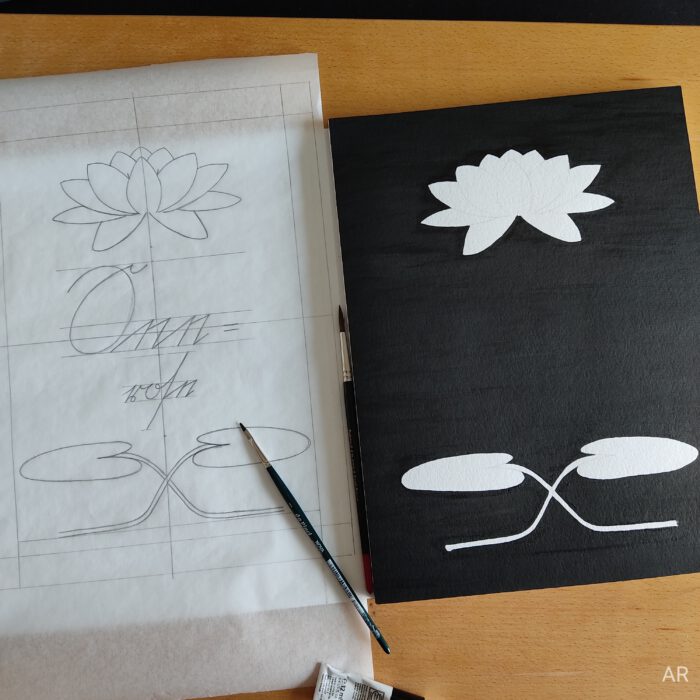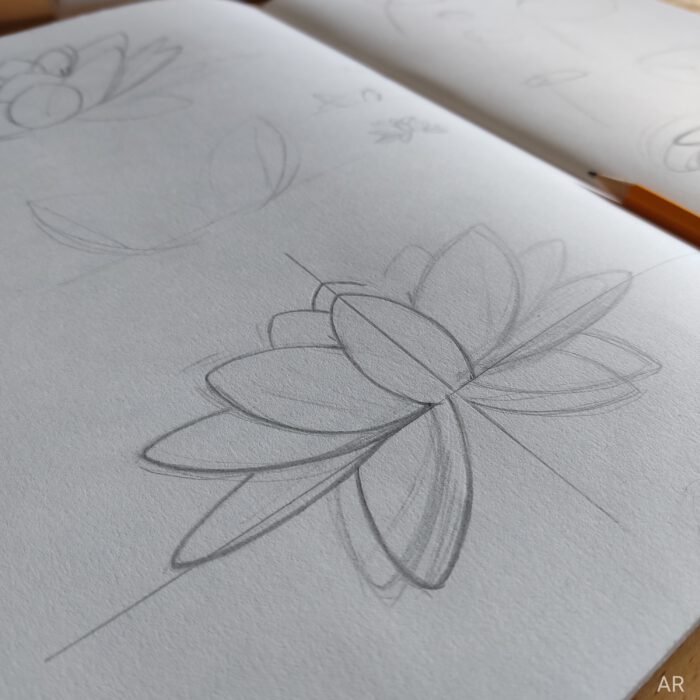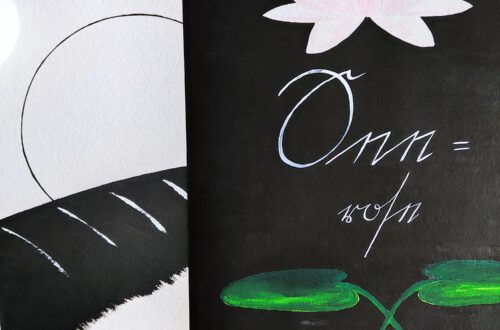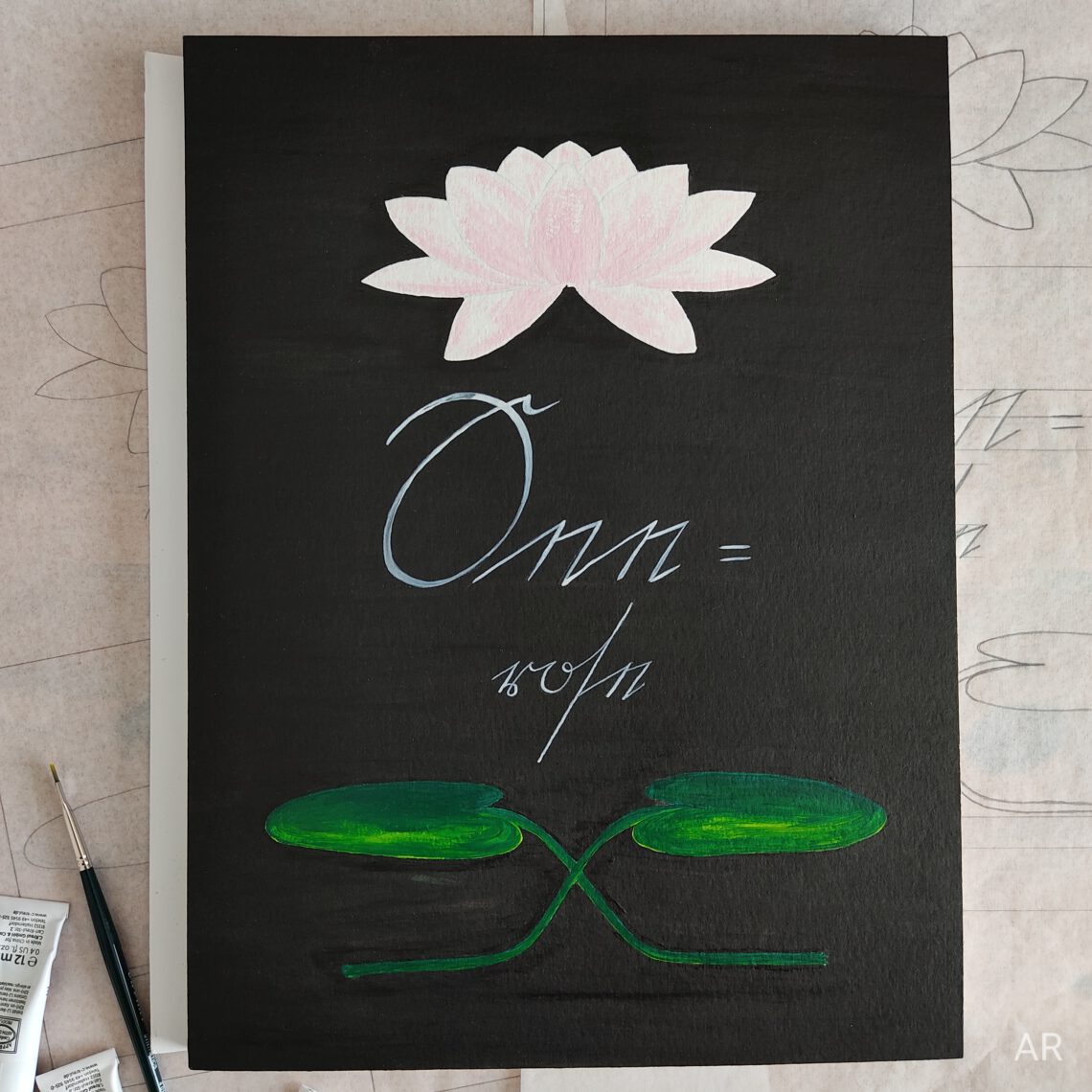
Water lily – Seerose
The Water lily project … I can´t really tell where the idea came from. I guess it was lurking around since I copied the Grimms´s folk tale „The Nixie of the Mill-Pond“ in german cursive for practicing earlier this year. Also there is this beautiful book „Undine“ by gorgeous Benjamin Lacombe which was standing close to my writing desk during that particular time. I like ponds and water lilies. Not only are they beautiful flowers, they also provide a calming atmosphere floating on the water surface. But! Do we know what´s going on underneath the surface? Ponds barely have clear water we can only guess what´s happening down there. These are highly fascinating places, beautiful and mysterious. I have to admit that I love the idea that maybe, only maybe there are actually creatures like nixies and water sprites living there. The fascination for mythology in all kinds of ways has never really vanished since my childhood …
Well, back to water lilies! So they were dwelling in my head since some time and one day I think I just wanted to draw one and combine it with the word „water lily“ in german („Seerose“) written in german cursive. The first letter, capital „S“ is one of my favourites in Kurrentscript! It is big and round and dynamic to write. The layout should have a stylistic reference to Art Nouveau but in a minimalistic and less intricate way. I went back and forth with the layout trying different compositions and ways to connect the three elements of the piece – calligraphy in the middle framed by the flower on top and the leaves on the bottom – to make it look more like a whole. It all ended up looking kind of trashy (but not in a nice way). So I reminded myself of the minimalistic approach I had in mind in the very beginning and happily went with that.
The part which was the most fun surprisingly was colouring the flower and leaves. At first I was a little shy but mixing the colours and testing different combinations was highly enjoyable. The green-yellow tone of the leaves gives them the slightly mysterious look I was aiming for whereas the flower turned out tender and soft.
If you are curious check out the fine art print of the Water lily in the shop!
Research
Nymphaea – just the name alone give me thrills and takes me to mystical and enchanted places, I can´t help it. Actually in Greek mythology there is the tale that once a nymph (unfortunately I couldn´t find out which one) fell deeply in love with Heracles. But her love remained unrequited and she died of grief. The Gods had pity on her and turned her into the white water lily.
The white water lily is indigenous to Europe. A plant toxic in all parts by the way! In the late 19th century (around 1880 – 1891) the french horticulturalist Joseph Bory Latour-Marliac succeeded in cultivating frost-resistant hybrids from tropical water lilies. That made it possible to leave the plants outside in european winter: Gardeners were no longer tied to the white water lily only.
And of course we all know Claude Monet´s water lilies, right? He started painting them in the 1890 until his death in 1926. They were part of his private garden in his house in Giverny, France and german Wikipedia tells us he hired a gardener just for taking care of the water lilies. More and more Monet focussed on not painting actual objects or views but the water surface of his pond with its reflections and the water plants in there adding structure to the composition. The subject itself became less relevant.
In elementary school my teacher showed us Monet´s water lilies. I remember thinking „Oh dear, how boring! Why should anyone be painting the same thing over and over again?“ Even though I was impressed by the colours. And I also remember thinking „Why is this so blurry? I´m not sure if I can spot any water lilies in that picture …“ But as I liked my teacher I decided to give Monet a chance. Well, thankfully we all grow and evolve over time and yeah, I´m quite a fan of Monet now 🙂
Have a great day!
Annika

